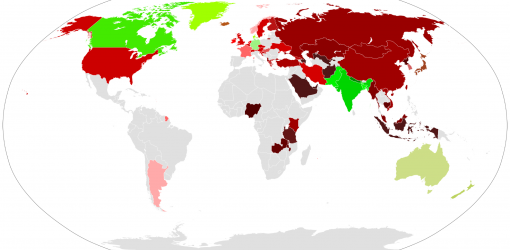Recognition Map of Non-Binary Gender Identities

Key:
Blue: Friendly to nonbinary people
Yellow: It is somewhat friendly to nonbinary people
Light Green: Country allows non-specified options
Dark Green: Country is divided on giving nonbinary people their rights, with a general acceptance
Red/Orange: Country is divided on giving nonbinary people their rights, with a general denial of rights
Pink: Not friendly at all to nonbinary people
White: No information
Purple: Plans to be friendly to nonbinary people
The recognition map above identifies “whether an organization acknowledges that non-binary identifying people exist and have valid identities” and which organizations do not force people to wrongly identify themselves as a binary gender. It is problematic that countries have different laws from each other because ambiguous legislation confuses non-binary identifying people in recognizing their rights.
Passports and other identification documents are an issue because some countries let people have non-binary gender markers and they cannot travel to countries that do not have the same passport laws. For example, Australia allows non-binary gender markers like X for unspecified, T for transgender, I for intersex, E for eunuch, or O for other. However, The United States has no process for non-binary gender identification. Even different states have different laws, complicating the issue. Some countries require proof of surgery to fully transition, or sterilization.
